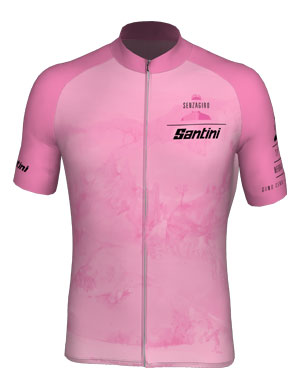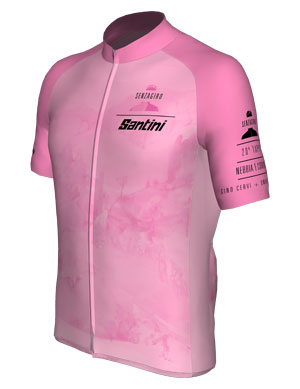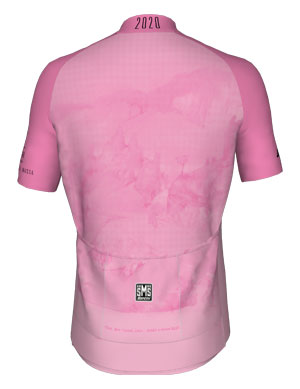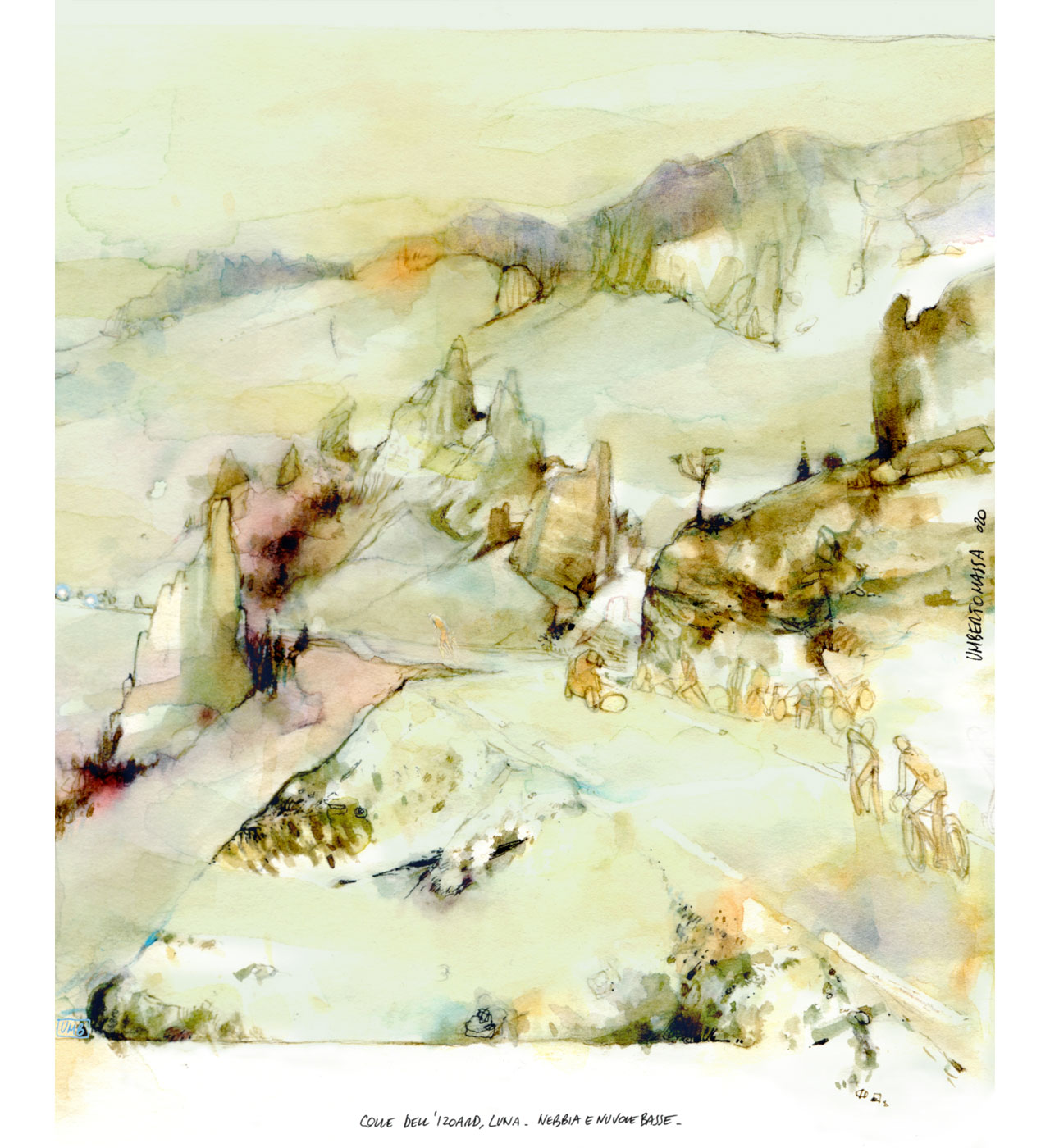
In the morning of the 30th May 2020, in the roads of the center of Alba and in the local piazza, the peloton passes in front of the eyes of those who can not remember that afternoon, a very long time ago, when people pointed out and read aloud, one by one, the battle names embroidered on the red or blue handkerchiefs on the parading partisans. They did it the same way they would have read the racing number on the back of the cyclists through a Giro d’Italia before the Second World War.
It is but a moment; yet, it is the only in full colour through the entire day. On the Tanaro bridge the race seems to be swallowed by the fog. A sort of new fog, that nobody seems to remember, even less at the end of May, with Summer finally approaching. The flat straight roads between Bra and Saluzzo look like swords, cutting through the solid volume of the fog; the peloton seems to accept that strange desire of disappearing, of not being there. Still, this is the decisive stage, the stage where three weeks of though riding, tiresome climbing, furious sprinting are finally reaching their full meaning. Everyone knows that: knights of fortune, assault frontmen looking for a very last bit of glory, looking for making their day in order to comply to the deluded expectations of patrons and sponsors; as well as those who still hope for a surprise reversal of destiny, through a strategic attempt; and those four riders leading the charts through mere ninety seconds of distance. A minute and a half, compared to 200 hundred kilometres and four mountains (the last climb has the arrival line), is almost nothing.
In the middle of Val Varaita, between Brossasco and Frassino, after a greyish procession through 60 kilometers, Krist Neilands rips the padding first: he needs some points for the King of the Mountain chart. The blue jersey leader, Visconti, does not give a second thought in following him; George Bennett is with him. This seems to be the starting shot. Two Deceuninck-Quick Step men jump at their backs: Davide Ballerini and James Knox. Something seems really to be happening, even though the fog dominates the road: a stubborn, jealous fog willing not to reveal anything about the race. No helicopter can fly, no video can be broadcasted. Only the motorcyclists, in the heart of the race, try to gather things together and to describe everything they could on the radio.
The real climb starts in Casteldelfino. After Chianale the slope gets more and more severe and the first shots come from the Pink jersey group. Evenepoel, il partigiano Remco, starts the fire. A few minutes from there he is awaited by his compagni from the Briskstep Brigade. The group seems to be made of rosary beads slowly passing through the giant fingers of the mountain: the Flemish rides his prayers and Betancur, Lopez, Carapaz and Yates respond, each in his own way. Keldermann, Bardet and Zakarin too, as well as a resurgent Dumoulin. Yet the leading voice seems to be missing: Nibali, the Pink jersey, can not keep the pace. He is clever enough to know that he would better not answering the attacks. He keeps on climbing on his own pace, slower than the others: a few meters in front of him, they disappear into the fog. Everyone is riding hard, everyone is suffering but the fog – the fog gracefully filling the gaps between the cyclists, the mountain walls, comely swallowing the rocks and the last sparse larches whose tops can only be seen, as if they were the arms of people drowning and screaming for help. Nibali seems to be thinking of himself as such, perhaps: with more than a hundred kilometres to go, this appears quite a crunch. Giulio Ciccone stays with him, maybe on a tactical basis; as well as Gino Mäder stays beside Pozzovivo, fumbling away in the Agnello fog.
Il partigiano Remco is twenty years old and seems to be riding since he was born. Less than a minute after Neilands, Bennett, Visconti and the two Quick-Step men have reached the mountain top, he catches them without even breathing or putting his cape on. He fastens the pace in front of them, somewhat embarrassed by his strength. On the Mountain Grand Prix, Nibali concedes them 1’15”: two seconds more than those necessary to keep the pink from Betancur. In less than a half of the twenty kilometres downwards, Remco reaches the leaders: this means that, when Izoard begins, he is the new leader of the general classification. Remco is twenty years old, Izoard can be his A-levels. As well as an offer by a top-notch university. Remco devours the large Arvieux valley, even with no help from his compagni of the Briskstep Brigade. He makes his own day; Bardet seems to be the last man standing. Behind them, Nibali is at loss if only Betancur, Yates, Lopez, Carapaz and Dumoulin cooperate. Remco and Romain up front, through the yellow desert of stones in Casse Deserte, seem to be as tiny as ants but as quick as hares while skimming through the Coppi and Bobet memorials. Bobet, Bardet: the Izoard sommet line is a rhyming couplet 2360 meters high. Still, there are 53 kilometres of Apline merry go-roud to go.
Briançon stets the climb of the Montgenèvre, the less worrying of the four mountains. As far as maps can be trusted. Remco, the young partigiano, suddenly feels a red light on inside his chest; the older maquisard Romain knows instead what to do. A click on the gear and the trick is done. On the Montgenèvre top, Bardet passes first, this time on his own; the nosedive towards Cesana, to Remco, is a jump in the darkest fog: scooped out of energy, he even misses a couple of harpins. The chasing group know what they are doing. Even Nibali – side by side with Ciccone – seems to be finding his pace. He looks like a Punic elephant.
There is only Sestriere to go: eleven kilometres and a half deciding of the stage, of the whole Giro perhaps. Bardet seems unattainable up front. Behind him Evenepoel is the prey; the group chases him while entering Cesana. Carlos Betancur has the chance of his life: since a few kilometres, he is theoretically in pink again. Still, illusions can be deceptive. Just behind the San Sicario crossroads, where the roads gets higher and higher, the Columbian gives up. Carapaz gazes at him and seems to be pitifully hesitating; then, he jumps on the back of the train led by Simon Yates with Lopez and Dumoulin. Climbing the Sestriere is a sudden death tournament. Five kilometers to go and Lopez turns off. Four kilometers to go and Dumoulin surrenders. Behind them Nibali, with some kind of a new energy, gnaws away the distance after having thought to drown in the foggy gloomy clouds. Remco is adrift: the young attacker will come up on the finish line some ten minutes late.
The fog is the steady leader on the Sestriere finish line. Bardet is the first to rip the curtain and crosses the line in triumph; he knows that the overall classification will be a landslide behind him. A minute later Carapaz keeps a few meters between himself and Yates; almost three minutes later; Dumoulin and Bennett; 3’40” late, Lopez, Zakarin and Keldermann; 4’28”, Betancur and Visconti; 5’03”, Nibali with his trustful Ciccone. The Ecuadorean grabs the Pink jersey for a mere ten seconds over the Briton; Nibali is just 13 seconds away.
With such a tight call, tomorrow’s time trial to Milan will definitely not be a red carpet. Will Carapaz win again? Will Yates find his ultimate consecration? Will Nibali succeed in becoming the oldest Giro winner? The Senzagiro will be a matter of moments.

This jersey will be signed by the stage winner and auctioned for charity at the end of the Senzagiro. Design curated by Fergus Niland, Creative Director of Santini Cycling Wear, based on a design by the illustrator Umberto Massa.



To view the stage and general standings and learn more about the Senzagiro project

